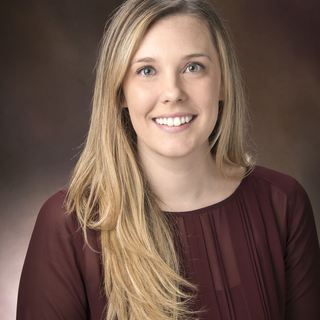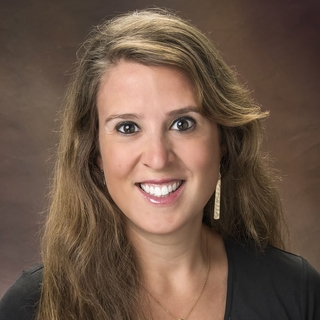In the first large, real-world study of universal screening for autism spectrum disorder (ASD) in toddlers, researchers at Children’s Hospital of Philadelphia (CHOP) have found that the most widely used and researched screening tool is less accurate than shown in previous studies conducted in research laboratory settings. The new study also revealed significant disparities in detecting early autism symptoms in minority, urban and low-income children. The findings were published online today in the journal Pediatrics.
The American Academy of Pediatrics (AAP) recommends screening all toddlers for ASD at their 18- and 24-month primary care check-ups using the Modified Checklist for Autism in Toddlers with Follow-Up (M-CHAT/F), a two-stage parent survey to determine whether a child may have autism, with the follow-up designed to eliminate false positives. However, most studies to evaluate the accuracy of the M-CHAT/F have been conducted in research settings rather than in real-world clinical settings. Therefore, very little was known about screening in the recommended primary care setting, nor about longer-term outcomes for children who screened negative on the M-CHAT/F. The CHOP study is the first to look at outcomes of truly universal screening in a real-world primary care setting.

“As part of a large pediatric network implementing universal screening, we found ourselves in a unique position to find answers to critical questions about the accuracy of the M-CHAT, and to determine how many children are missed by early, universal screening,” said lead author Whitney Guthrie, PhD, a clinical psychologist specializing in early diagnosis at CHOP’s Center for Autism Research. “Early intervention has been shown to improve outcomes, potentially into adulthood. We know that early and accurate screening and diagnosis is the crucial first step in helping children access those effective, autism-specific therapies.”
The CHOP research team studied the electronic health records (EHR) of 25,999 patients screened in primary care using the M-CHAT/F between the ages of 16 and 26 months, and systematically followed these children until 4 through 8 years of age using the EHR. Ninety-one percent of these children were screened using the M-CHAT/F, meaning that nearly universal screening of all children in primary care was achieved.
The study showed that the M-CHAT/F detected only about 40% of children who went on to be diagnosed with ASD. However, children who screened positive were diagnosed seven months earlier than those who screened negative, suggesting that early screening may facilitate early intervention. Overall, 2.2% of children in the study were ultimately diagnosed with ASD, which is consistent with the Centers for Disease Control and Prevention (CDC) estimates nationally.
“Although our findings reveal significant shortcomings in current screening tools, we want to be clear that we are not recommending that pediatricians stop universal screening,” said Guthrie. “Instead, clinicians should continue to screen using the M-CHAT/F, while being aware that this screening tool does miss some children with ASD. Any clinical or parental concerns should be taken seriously, and warrant continued surveillance even if a child screens negative on the M-CHAT/F. And of course, a screen positive on the M-CHAT/F warrants referral so that children with ASD can be diagnosed and receive early intervention.
“Pediatricians should also be aware of disparities in screening practices and results in children of color and from low-income backgrounds.”
The CHOP study found that the 9% of children who did not receive screening at 18 or 24 months were disproportionately from racial minority groups; from non-English speaking households; and from households with lower median income and who receive Medicaid. When screening was administered, these same children were more likely to receive a false positive result. The M-CHAT was also less accurate in girls than in boys.

“Persistent racial and economic disparities in autism screening and diagnosis are a cause for great concern, and are consistent with previous research showing that black and Hispanic children tend to be diagnosed years later than white children,” said co-author Kate Wallis, MD, MPH, a developmental pediatrician and researcher at CHOP’s PolicyLab who is also studying disparities in referrals for autism services. “This study revealed important limitations and provides us with new knowledge that we can use to make critical improvements to autism screening tools and screening processes, so pediatricians can properly detect and support more children with autism and reduce disparities in diagnosis and care.”
Guthrie et al, “Accuracy of Autism Screening in a Large Pediatric Network.” Pediatrics, online 27 September 2019. DOI: 10.1542/peds.2019-0925.
Featured in this article
Specialties & Programs
In the first large, real-world study of universal screening for autism spectrum disorder (ASD) in toddlers, researchers at Children’s Hospital of Philadelphia (CHOP) have found that the most widely used and researched screening tool is less accurate than shown in previous studies conducted in research laboratory settings. The new study also revealed significant disparities in detecting early autism symptoms in minority, urban and low-income children. The findings were published online today in the journal Pediatrics.
The American Academy of Pediatrics (AAP) recommends screening all toddlers for ASD at their 18- and 24-month primary care check-ups using the Modified Checklist for Autism in Toddlers with Follow-Up (M-CHAT/F), a two-stage parent survey to determine whether a child may have autism, with the follow-up designed to eliminate false positives. However, most studies to evaluate the accuracy of the M-CHAT/F have been conducted in research settings rather than in real-world clinical settings. Therefore, very little was known about screening in the recommended primary care setting, nor about longer-term outcomes for children who screened negative on the M-CHAT/F. The CHOP study is the first to look at outcomes of truly universal screening in a real-world primary care setting.

“As part of a large pediatric network implementing universal screening, we found ourselves in a unique position to find answers to critical questions about the accuracy of the M-CHAT, and to determine how many children are missed by early, universal screening,” said lead author Whitney Guthrie, PhD, a clinical psychologist specializing in early diagnosis at CHOP’s Center for Autism Research. “Early intervention has been shown to improve outcomes, potentially into adulthood. We know that early and accurate screening and diagnosis is the crucial first step in helping children access those effective, autism-specific therapies.”
The CHOP research team studied the electronic health records (EHR) of 25,999 patients screened in primary care using the M-CHAT/F between the ages of 16 and 26 months, and systematically followed these children until 4 through 8 years of age using the EHR. Ninety-one percent of these children were screened using the M-CHAT/F, meaning that nearly universal screening of all children in primary care was achieved.
The study showed that the M-CHAT/F detected only about 40% of children who went on to be diagnosed with ASD. However, children who screened positive were diagnosed seven months earlier than those who screened negative, suggesting that early screening may facilitate early intervention. Overall, 2.2% of children in the study were ultimately diagnosed with ASD, which is consistent with the Centers for Disease Control and Prevention (CDC) estimates nationally.
“Although our findings reveal significant shortcomings in current screening tools, we want to be clear that we are not recommending that pediatricians stop universal screening,” said Guthrie. “Instead, clinicians should continue to screen using the M-CHAT/F, while being aware that this screening tool does miss some children with ASD. Any clinical or parental concerns should be taken seriously, and warrant continued surveillance even if a child screens negative on the M-CHAT/F. And of course, a screen positive on the M-CHAT/F warrants referral so that children with ASD can be diagnosed and receive early intervention.
“Pediatricians should also be aware of disparities in screening practices and results in children of color and from low-income backgrounds.”
The CHOP study found that the 9% of children who did not receive screening at 18 or 24 months were disproportionately from racial minority groups; from non-English speaking households; and from households with lower median income and who receive Medicaid. When screening was administered, these same children were more likely to receive a false positive result. The M-CHAT was also less accurate in girls than in boys.

“Persistent racial and economic disparities in autism screening and diagnosis are a cause for great concern, and are consistent with previous research showing that black and Hispanic children tend to be diagnosed years later than white children,” said co-author Kate Wallis, MD, MPH, a developmental pediatrician and researcher at CHOP’s PolicyLab who is also studying disparities in referrals for autism services. “This study revealed important limitations and provides us with new knowledge that we can use to make critical improvements to autism screening tools and screening processes, so pediatricians can properly detect and support more children with autism and reduce disparities in diagnosis and care.”
Guthrie et al, “Accuracy of Autism Screening in a Large Pediatric Network.” Pediatrics, online 27 September 2019. DOI: 10.1542/peds.2019-0925.
Contact us
Ben Leach
Autism Integrated Care Program